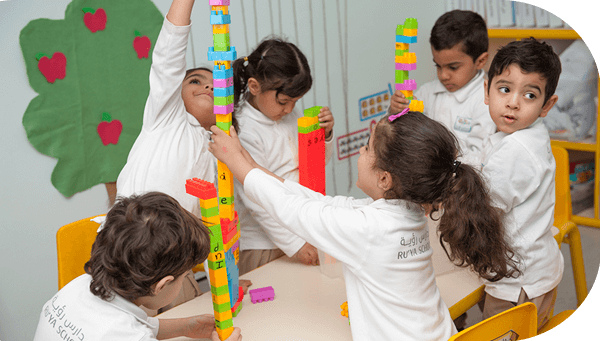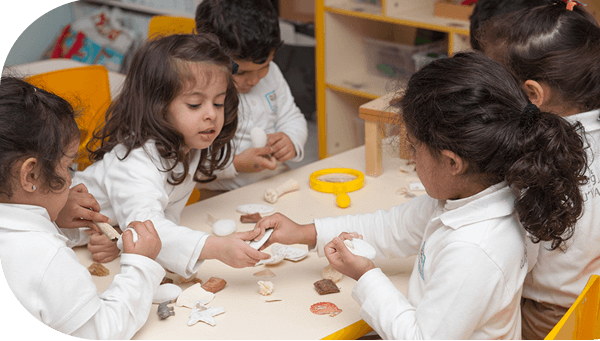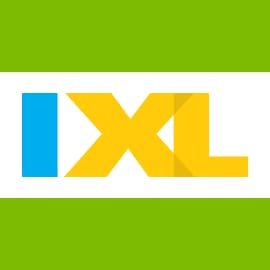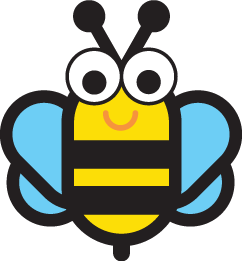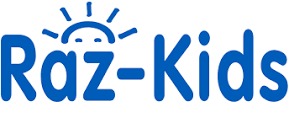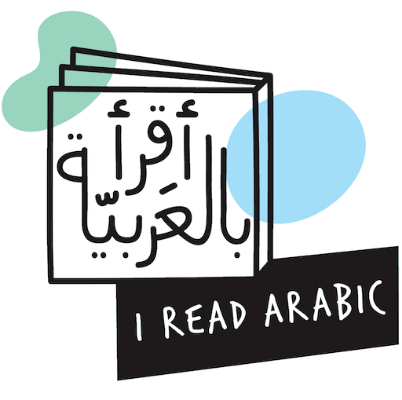We believe that children who receive high-quality care during their first and second years of life are likely to become much more capable of communicating and harmonizing with others, and are able to self-regulate. We also believe it increases their love of learning in their pre-learning stage.
Preschool Classes
Our preschool level caters to children between 1 and a half years to 3 years of age. As a part of our belief that students’ differences must be taken into consideration, and to achieve differentiated learning, the children in our classes are divided into three separate groups.
We also consider balance in the groups, which means the child would be included in the group closest to his or her age group.
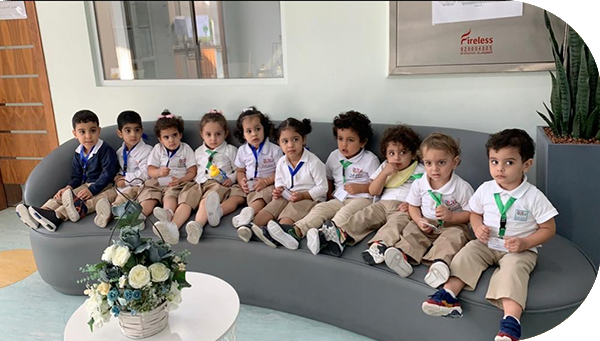
Academic Curriculum
Our preschool class adopts the bilingual Creative Curriculum which specializes in the preschool and kindergarten levels (from birth to 6 years old) which was developed by the Teaching Strategies International company. This company is considered a pioneer in early children’s education resources in the United States of America as well as globally. It is approved and supervised by the National Association for the Education of Young Children (NAEYC). Despite the abundance of activities, assessment tools, professional development, and support resources for guardians, we still ensure to enrich this curriculum with the national standards suitable for the child’s development.
Learning Units
The content of this curriculum is taught through learning units which discuss topics relevant to the child and related to his or her life. One unit takes approximately 5 to 6 weeks to cover. Taught within the units are concepts of faith, language, sports, science, and social activities which are tied to the child’s environmental awareness. This knowledge is further expanded through field trips that serve the objectives of the curriculum. These units which are:
Class Environment
Children are supervised at this stage by specialized teachers with high educational qualifications, such as a Bachelor’s degree in Kindergarten, a Bachelor’s degree in Special Education, or a Bachelor’s degree in English. They also possess first aid certificates, and periodically undergo suitable training within the professional development program in our schools. We also take into account the teacher to student ratio according to global standards. They prepare classrooms so that they may be safe, efficient, and rich environments which aid our children’s growth in all aspects equally: socially, linguistically, artistically, and cognitively. Teachers also ensure that they build positive relationships with the children.
Children’s Assessments
Students are assessed through the Gold Objectives as part of the Creative Curriculum. Teachers take notes of important information related to the child’s development. Each quarter, parents receive a report which clarifies the level their child has reached based on each of the objectives of growth and learning. The objectives of growth and learning have been classified as 43 goals within 10 aspects related to growth, development, and learning.
The first 4 goals represent the main aspects of a child’s growth and development:
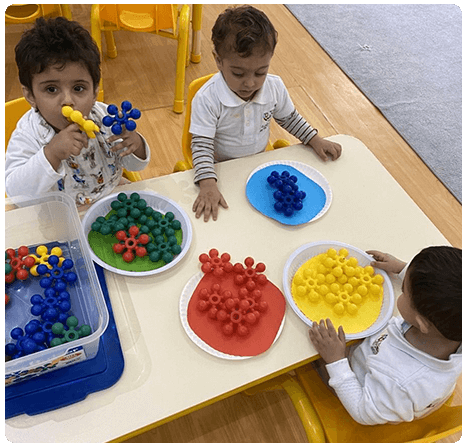
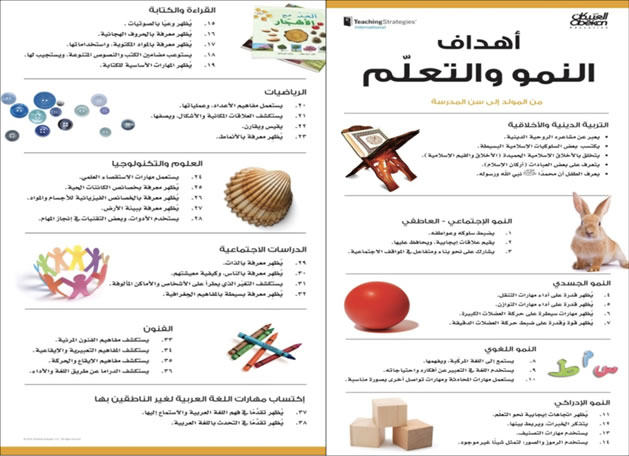
Furthermore, the next 6 goals represent the learning content, and are mainly considered outcomes of the early learning standards:
The 11th goal is related to Arabic language learners which aids the teacher in tracking the child’s development in learning the spoken language as well as expressions.
Daily Routine
25 minutes
Each child and his/her guardian is welcomed upon their arrival. Then, children put their personal belongings in the right place. The children spend their time playing in the activity corners or eating if they were unable to have breakfast at home.
30 minutes
The “question of the day” is discussed, and the children’s thoughts regarding the question are recorded. The morning circle also includes the recitation of Quranic Surahs, practicing sight words, singing songs, and reading the calendar.
2 sessions per day (1 hour each)
Children are divided into three groups, a group to work on fine motor skills activities, a group to work on discovering science through fun and age-appropriate science experiments, and a group to listen to a story in English and work on the comprehension activities related to the text.
30 minutes
The children and their teachers eat their healthy meals together in a calm, family-like atmosphere. While students are eating, they are guided to acquire social etiquette, religious etiquette, and self-reliance skills. Low tables are used during mealtimes to help children eat without the help of adults.
* Our school is free from all kinds of nuts.
2 periods per day (30 minutes each)
Children are divided into three groups, a group to work on fine motor skills activities, a group to work on discovering science through fun and age-appropriate science experiments, and a group to listen to a story in English and work on the comprehension activities related to the text.
20 minutes
It is the last meeting in which the teacher meets with the children before the end of school hours to discuss achievements made and ideas generated on that day. (This is done by telling a story or singing a song)
Field Trips
Field trips aim to form a relationship between the children and the surrounding world around them to give them the opportunity to interact directly with their environment and develop their senses and their abilities to observe, experience and discover.
Parents-School Partnership
Once a year, each mother is scheduled a visit to partake in reading a story to the class with her child. This activity takes place before dismissal from 12:00 to 12:30 on Tuesday of every week.
It is held annually in the first quarter of the first semester, where the children take their parents on a tour inside the school to get acquainted with their classroom, gymnasium, school library, playgrounds, and enjoy playing together.
The Learning Exhibition is held annually in the last quarter of the second semester to exhibit their learning journey during the school year, where students will display their learning outcomes in front of their family members and friends.
Family Activities aim to involve the mother with her child in an artistic activity or physical games in a joyful atmosphere with his/her teachers, friends and other mothers. These activities are inspired by what has been learned and the skills utilized that children have implemented during the previous period. We stress the importance of the presence of the child’s mother or another person on her behalf for these activities. In the event that this is not possible, the parents must pick-up the child before the start of the activities as it could affect the child’s mental wellbeing.
Three basic meetings are held during the school year that are very important for the mother to attend.
First meeting of the academic year:
The first meeting is held on the first day of the school year to provide an opportunity for the mother and for the teachers to get to know each other, and for the mother to get to know the child by filling out an information form that will provide sufficient understanding of the child and his/her needs.
Meeting in the ninth week of each semester:
In this meeting, the progress of the child is discussed according to the goals of development and learning.
Other scheduled meetings at any time during the year:
Those who wish to meet again with the child’s teachers can book an appointment with the reception any time during the school year.
The festival aims to integrate concepts of voluntary work and to create the experience of buying and selling among our students, and provide them with the experiences of giving and empathizing with others.
All students in kindergarten and primary classes participate in the festival, where they sell products made by them in a large festival attended by their parents. All the proceeds are allocated to sponsoring orphans from The Charitable Society for Orphan Care in the Eastern Region Benaa’.
Student Policies and Regulations
Administration-Parent Communication
